ARTISTS
Shinseungback Kimyonghun is a Seoul based artistic duo consisting of Shin Seung Back and Kim Yong Hun. Their collaborative practice explores technology’s impact on humanity. Shin Seung Back studied Computer Science in Yonsei University and Kim Yong Hun completed a Bachelor of Visual Arts at the Sydney College of the Arts. They met while studying at the Graduate School of Culture Technology in KAIST and after completing Masters in Science and Engineering, they started to work as Shinseungback Kimyonghun in 2012. Their work has been presented extensively, including the Ars Electronica Festival, Vienna Biennale, the ZKM and MMCA Korea.
ABOUT THE WORK
The structure here recreates the wave breaking on the stone.
Come in, and become the stone.
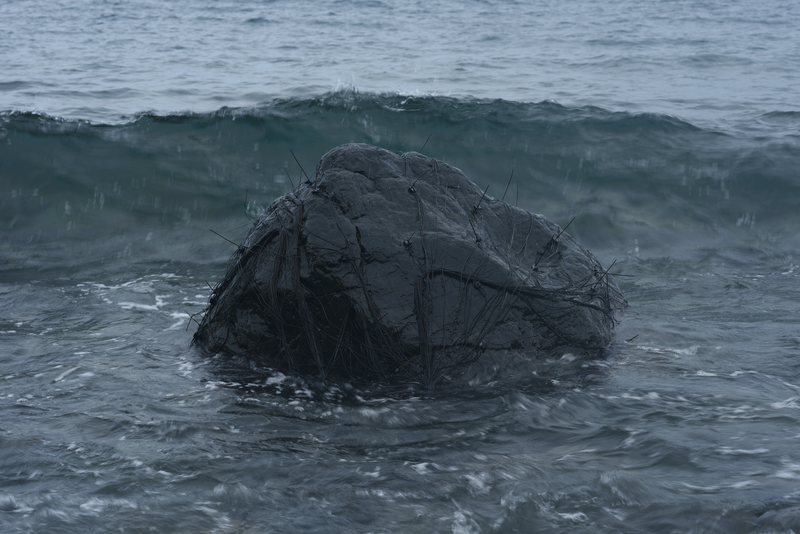
Stone, a 2017 project by the joint artist involved picking a stone in the island of Ulleungdo, rigging it with water sensors and recreate the shock waves, vibration, sound and sensory experience. In their project “Stone”, Korean artists Shin Seung Back and Kim Yong Hun examine this persistent human interest in “self-improvement” through technological prostheses—applying this theory of “perception extension” to something as inert as a volcanic rock. The project consisted of 64 water sensors, 64 solenoids, wooden panels, arduino, computer, custom software, speakers, screen and projector.
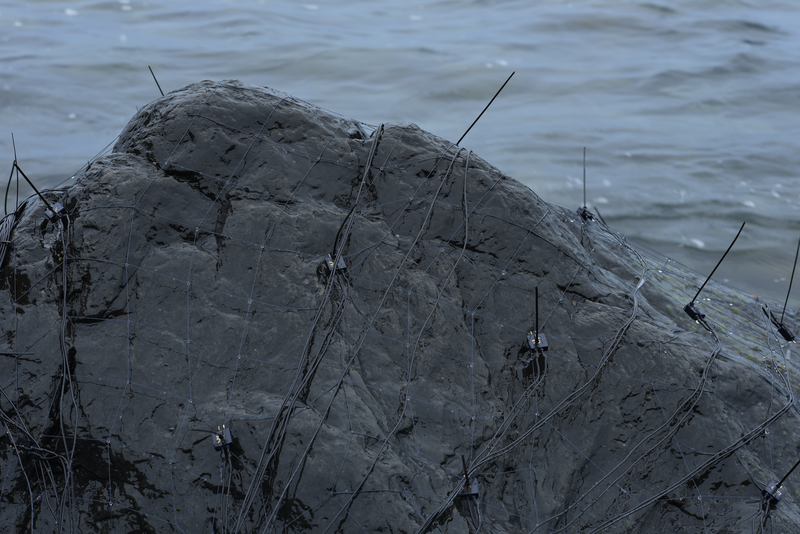
In their exhibition at the Department for Culture and Education of the German Consulate General in Shanghai, they have re-created this experience building a structure with solenoids which viewers can sit inside to experience the relentless pounding of the sea.
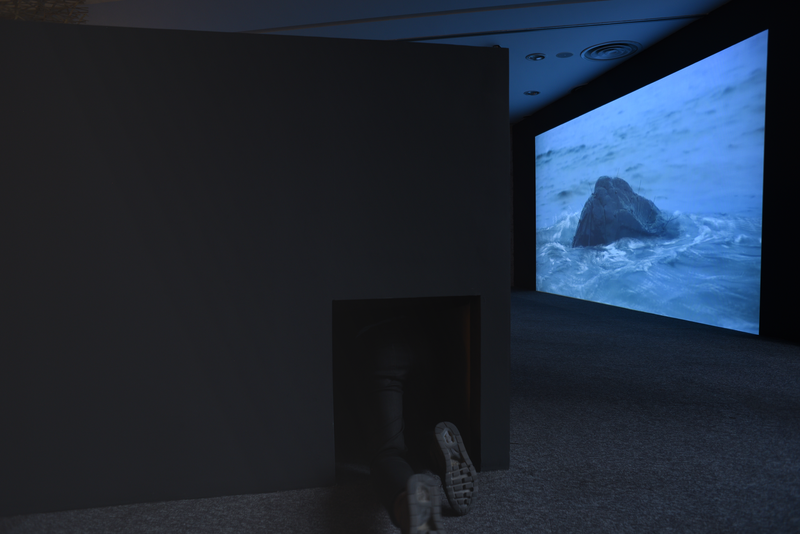
THOUGHTS ABOUT THE WORK
Shinseungback Kimyonghun (SSBKYH) has been interested in these boundaries (usually undefined) and the perception of ‘humanness‘ as seen through their use of AI and Facial Recognition. Our burgeoning connection between our lives and machines can be paralleled with our intertwine with nature as humans, in which machines are slowly becoming not only integrated, but affixed into our existence as humans. Technology, through extensive usage, has became ingrained in our culture and socioeconomic sphere. In Stone, we question our humanness in technology, and how our senses can be stimulated by the uses of sensors that replicate the experience of being a stone. This inert object challenges our complexity as human beings; putting aside qualities such as culture, relationships and emotions that makes us ‘human’ and detaching from them to build a spiritual relationship with machines. SSBKYH explores identity and relationship with earth by allowing us to be immersed in nature, without having to be physically present in the setting, although one might ask how this reflects truly having a spiritual connection in a makeshift setting.
Posthumanism, as expressed by our artists, is a philosophical perspective of how change is enacted in the world. SSBKYH provides audiences with thought-provoking questions, such as ‘What makes us human?’ by creating other New Media installations and pieces that contrasts us with animals, sometimes drawing both similarities and allowing us to interpret for ourselves the differences. One such example is Cat or Human, where Artificial Intelligence is employed through algorithm but fails to differentiate the physical appearance of the two. Posthumanism in this work comes into play as AI and humans identify the inconsistency of technology to recognize human, thus dehumanizing us. However, SSBKYH does not explicitly identify this as a negative. Dehumanizing through various forms such as a Stone representation, does not focus on the Stone as the subject matter (or any sort of human representation), but rather our interaction with nature through the Stone, aided by mechanical means. Creating a sophisticated space that engages our sensory organs reenacts our physical experience through a virtual one.
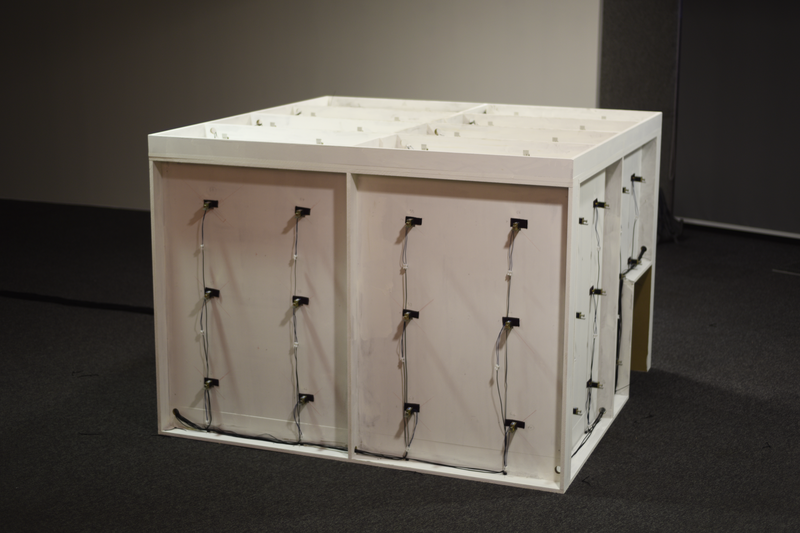
‘Stone’, to simulate shock vibrations.
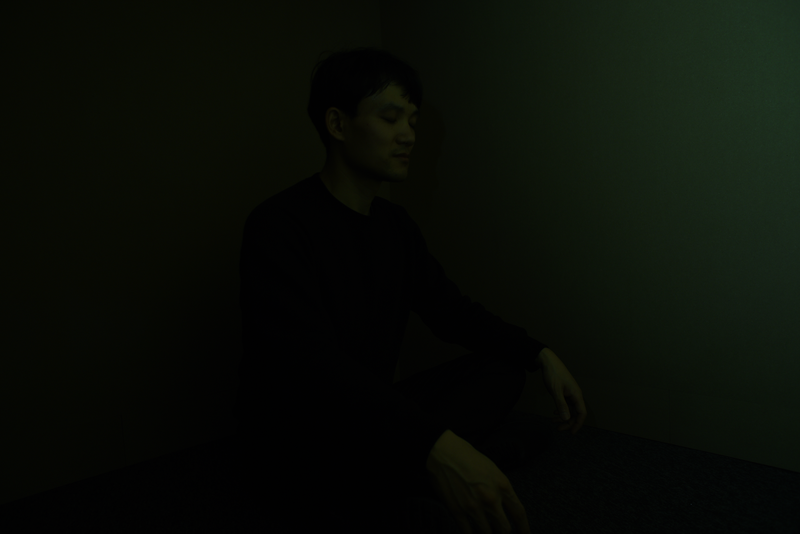
Secluded space where participants can sit in the ambience of waves crashing onto the Stone.
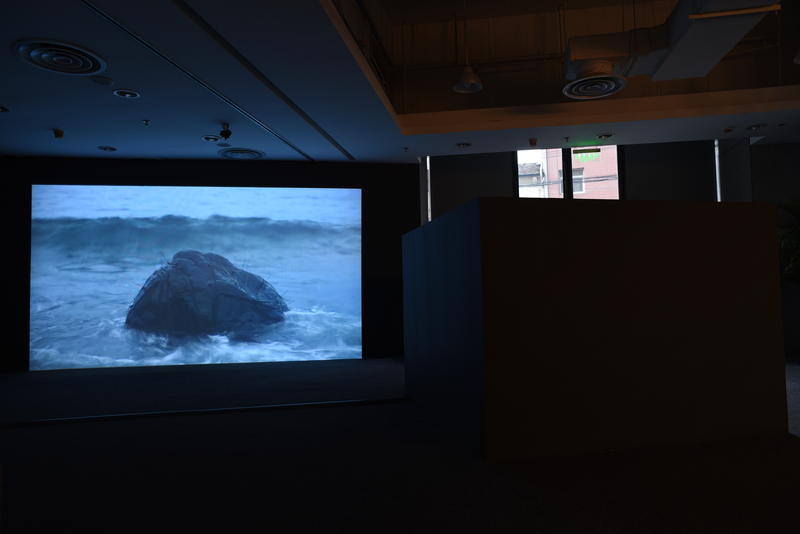
Live streaming of the Stone, the waves and its interaction with the conditions at sea.
I admire the intricacies involved in making this project successful; the visual, touch and sound sensory have been engaged in adamantly raw manner. The artists do not translate its motions, participants are free to form their opinions on the artists’ intent in engaging them in such a simulation. More so, we as ‘omnipotent’ beings are being humbled to take on the form of a Stone, an inert object that ‘exists’, such as how we as humans also simply ‘exist’. Our role in the world may continue to be a cloaked mirage that we constantly seek to find an answer for.
Reference:
